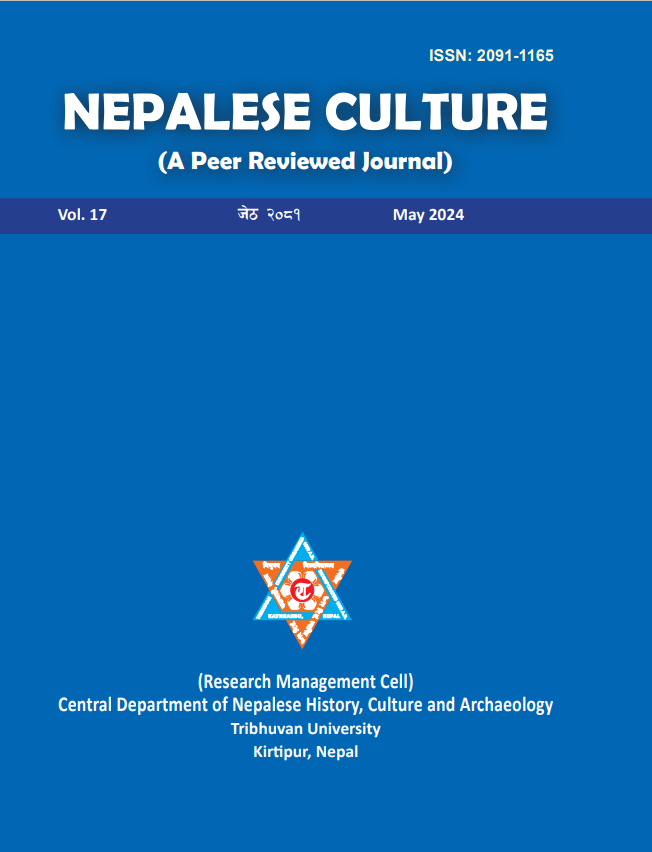Mahalaxmi Jatra: An Amazing Festival Tourism Product of Lubhu, Nepal
DOI:
https://doi.org/10.3126/nc.v17i1.64400Keywords:
Mahalaxmi Jatra, procession, rites, rituals, customs, tourism productAbstract
Lubhu is one of the historical and cultural tourist destinations located on Mahalaxmi municipality 8, Lalitpur district of Kathmandu Valley in Nepal. There can observe and have a wonderful experience of tangible and intangible cultural tourism properties within core of Lubhu. The people of Lubhu annually celebrate different colourful festivals and Jatras such as Mahalaxmi Jatra, Nepal Sambat, Buddha Jayanti, Dashain, Tihar, Yomahri Punhi, Gobrateswor Mahadev jatra, Gaijatra, Krishna Janmasthami, Naag Panchami, Gathemangal, Ram Nawami, Chaite Dashain, Holi, Shivaratri, Shree Panchami, Pishach Chaturdashi, Byaja Chaturdashi on the special auspicious occasions. Among them, Mahalaxmi Jatra is an amazing cultural heritage and festival tourism product of Lubhu. It celebrates in the month of Baishakha especially from Baishakha Sukla Tritiya till to Ekadasi which takes more than a week for its completion. It is considered a hallmark of indigenous cultural identity and a popular cultural tourism product of the destination. But, through the tourist and tourism perspectives this Jatra is still not adequately exposed. Hence it is necessary to recognize Mahalaxmi Jatra as a prominent tourism product of Lubhu. How it is celebrated? what its celebrating processes, processions, rites and rituals, customs and customary laws? how far it is considered as an important source for alluring tourists and what are the major problems and challenges that hindering over the promotion to it as a tourism product? are the major questions and research gaps which have been answered and addressed through this paper. Likewise, to explore the different aspects embedded with Mahalaxmi Jatra of Lubhu and to examine Mahalaxmi Jatra of Lubhu as an amazing cultural tourism product are the key objectives of the paper. In this paper both primary and secondary data and qualitative approach have been used and it is based on analytical and descriptive research design.
Downloads
Downloads
Published
How to Cite
Issue
Section
License
© Central Department of Nepalese History, Culture and Archaeology, Tribhuvan University




